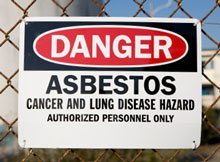The Evolution of Asbestos and Mesothelioma in Pop Culture
 Today, most people with access to media are aware that asbestos is dangerous.
Today, most people with access to media are aware that asbestos is dangerous.
Even people who are unfamiliar with the rare but deadly asbestos cancer, malignant mesothelioma, have heard that this once commonly-used mineral is toxic.
But this was not always the case. In the 1930s, 40s, and 50s when asbestos was at the height of its popularity in the US and other Western countries, the media often portrayed it as something of a “miracle mineral”.
A naturally-occurring mineral found all around the world, asbestos has high tensile strength and resists heat, fire and corrosion. For decades it was used in insulation, added to building products like floor tiles and concrete, and made into fireproof clothing, ironing board pads, hairdryer filters and even Christmas decor.
Asbestos in Song? Yes, Really
It seems hard to believe now, since thousands of people have gotten sick and died of conditions like asbestosis, lung cancer, and pleural mesothelioma, but the public once had a positive and even light-hearted view of asbestos.
Upbeat marketing messages from the asbestos industry often made their way into popular culture. The popular jazz standard “I Won’t Dance” is a perfect—if frightening—illustration.
Among the song’s playful and suggestive lyrics, written in 1935 for a film version of the musical “Roberta”, is the line “For, heaven rest us, I’m not asbestos, and that’s why I won’t dance”.
The line is a reference to the mineral’s well-known resistance to heat and suggests that the singer doesn’t have asbestos’ ability to resist the metaphorical “heat” generated on the dance floor.
“I Won’t Dance” was so popular that dozens of jazz icons have recorded it, including Ella Fitzgerald, Woody Herman, Peggy Lee, Fred Astaire, Johnny Mathis, Tony Bennett, and Frank Sinatra.
Asbestos in Comics
Another shocking example of how poorly asbestos was once understood are the Marvel comic book characters Asbestos Man and Asbestos Lady.
Developed in the 1940s as the nemesis of Human Torch, Asbestos Lady, and later, Asbestos Man, wore flame-resistant armor of “super-asbestos” that was supposed to allow them to rob banks by being impervious to melted metal.
But even asbestos-wearing super-villains were not impervious to the toxicity of asbestos in the long run. Although the characters disappeared for decades, when they reappeared in comics in 1990 and 2011, both had developed cancer from wearing their asbestos suits.
Asbestos in Film and TV
As our understanding of the connection between asbestos and lethal diseases such as malignant mesothelioma has expanded, references to the mineral in film and television have, thankfully, evolved.
In the early part of the 20th century, many references to asbestos were light-hearted like the line in “I Won’t Dance”. A 1942 British Newsreel of the Week entitled “The Wonderful Uses of Asbestos” is a prime example.
The film features upbeat music and smiling people using asbestos in “wonderful” ways. It is full of small “jokes” such as “If, in a playful moment, you decide to make a bonfire of the tablecloth, see that it isn’t made of asbestos!”
Today, however, media outlets are becoming more sensitive to the heavy toll asbestos has taken on the health of thousands of miners, sailors, asbestos industry workers, and their families, many of whom have since developed mesothelioma.
Dozens of documentaries have now been made about the threat of asbestos to human health including SciShow’s “The Real Story of Asbestos”, CBS News’ “Asbestos: Canada’s Dirty Secret” and “Evil Dust: The History of Asbestos”.
In the US, an estimated 2,500 people are still diagnosed with malignant mesothelioma every year, even though the EPA now regulates the use of asbestos. There is no cure for mesothelioma and those diagnosed with it typically face a poor prognosis.
Sources:
“I Won’t Dance”, Wikipedia article, referenced May 31, 2018
“Asbestos Lady”, Marvel Universe Wiki, Marvel.com, accessed May 31, 2018
“A Horrifying Look At When We Didn’t Know Asbestos Could Kill Us”, August 27, 2015, Popular Mechanics





